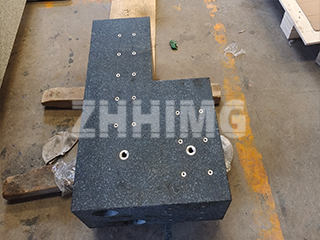To accurately determine the flatness of a granite surface plate, there are three common methods used in both field and lab settings. Each method offers distinct advantages depending on the working conditions and personnel expertise.
1. Graphical Method
This approach relies on geometric plotting based on the measured values at various inspection points. The data is scaled and plotted on a coordinate grid, and the flatness deviation is determined by measuring from the plotted graph.
-
Pros: Simple and visual, great for quick on-site assessments
-
Cons: Requires accurate plotting on graph paper; potential for manual error
2. Rotation Method
This technique involves transforming the measured surface (rotating or translating it) until it overlaps with the reference plane (datum). By adjusting positions and comparing data, you can identify the flatness deviation.
-
Pros: No plotting or calculation tools required
-
Cons: May require several iterations to be effective; not ideal for inexperienced users
3. Computational Method
This method uses mathematical formulas to calculate flatness deviation. However, accurate identification of the highest and lowest points is critical; misjudgment may lead to incorrect results.
-
Pros: Offers precise results with proper input
-
Cons: Requires more careful setup and data analysis
Diagonal Line Method for Flatness Data (Cast Iron or Granite Plates)
Another technique often used in combination with computation is the diagonal method. This method evaluates flatness by considering deviations from a diagonal reference plane across the surface.
Using instruments like spirit levels or autocollimators, deviations along sections are recorded and adjusted to the diagonal reference. The maximum deviation difference from the ideal plane is taken as the flatness error.
This method is particularly useful for rectangular granite or cast iron platforms and provides reliable raw data when high accuracy is required.
Summary
Each of the above methods—Graphical, Rotational, and Computational—has equal practical value. The best method depends on the measurement conditions, available tools, and user proficiency. For high-precision granite surface plates, accurate flatness evaluation ensures reliable performance during inspection and calibration tasks.
Post time: Jul-29-2025

